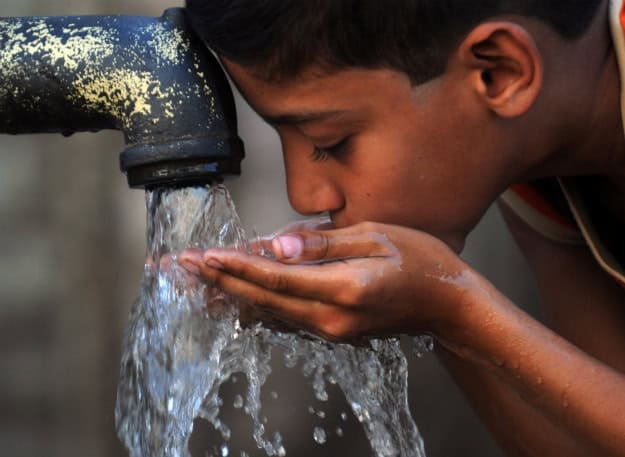ISLAMABAD – Asia, the continent that houses roughly half he world’s population, will face a “high risk of severe water stress” by 2050, if the current environmental, economical and population growth persists, warns a new study.
According to the Khaleej Times, the findings showed that the median amounts of projected growth and climate change in the next 35 years in Asia would lead to about 1 billion more people becoming “water-stressed” compared to the present time.
“It’s not just a climate change issue. We simply cannot ignore that economic and population growth in society can have a very strong influence on our demand for resources and how we manage them,” said one of the researchers Adam Schlosser, a senior research scientist at Massachusetts Institute of Technology (MIT) in US.
To conduct the study, the scientists built upon an existing model developed previously at MIT, the Integrated Global Systems Model (IGSM), which contains probabilistic projections of population growth, economic expansion, climate, and carbon emissions from human activity.
They then linked the IGSM model to detailed models of water use for a large portion of Asia encompassing China, India, and many smaller nations.
The scientists then ran an extensive series of repeated projections using varying conditions. In what they call the “just growth” scenario, they held climate conditions constant and evaluated the effects of economic and population growth on the water supply.
In an alternate “just climate” scenario, the scientists held growth constant and evaluated climate-change effects alone. And in a “climate and growth” scenario, they studied the impact of rising economic activity, growing populations, and climate change.
The study gave the researchers a “unique ability to tease out the human (economic) and environmental” factors leading to water shortages and to assess their relative significance, Schlosser said.
The IGSM model also allowed the team to look at how, under the same variables, scenarios change according to countries. This is particularly useful to come up with country-specific strategies, in order to avoid water stress.
Other variables, such as water supply networks into and out of the different areas, and the way population is distributed around said supplies should be examined, the researchers said.
According to statistics published in The News, Pakistan Council of Research in Water Resources (PCRWR), Pakistan has an estimated population of 187 million with an annual growth rate of 1.57 percent. By the year 2050, the population is expected to double and would become 63.7% urban as compared to only 36 percent in 2010. This will put tremendous pressure on water supply for households, industry and agriculture.
Meanwhile, out of the 140 million acre feet (MAF) of water annually available in Pakistan in a normal year, only about 40 MAF reaches the Indus delta.
The other 100 MAF of water is consumed over an area of 40 million acres. According to international standards, storage capacity is ideally recommended to be around 1,000 days given the climate in the country. However, in Pakistan, it stands at unbelievably low 30-day supply.
Thus, there is a grave danger Pakistan could become a water scarce country, which would be a disaster for a country that survives mostly on agriculture. Moreover, there is a growing deficit of water downstream as the scarcity grows, making it imperative to build reservoirs.
Experts point out that in India about one-third of water supply is stored in reservoirs as compared to just nine percent in Pakistan. They say that while India has built 4,000 dams, with another 150 in the pipeline, Pakistan built its last dam more than four decades ago.













